There are some businesses and organisations that still prefer to utilise traditional office-based systems when it comes to working on crucial tasks. However, it can’t be denied that more modern approaches, such as remote collaboration and open-plan office space layouts are quickly gaining popularity.
What makes cloud computing technology better? What makes it ideal when it comes to working remotely? You may have wondered about this yourself when you chanced upon the term Cloud Technology. But is it really worth trying out the cloud for your business and professional needs?
To understand this area of technology, you don’t need to be a computer genius. Read on below to find out more about working remotely with cloud technology.
Employee Benefits: Work Away From Work
There have been many studies on the increasing desire among employees to work more flexibly, this includes not only flexi-hours, but also working away from the office.
Gen Y and Millennials are often quoted as looking for an increased work-life balance. But in addition to those segments, there is also a huge skills base available to organisations from Working Parents.
Employing parents who work from home provides a number of benefits. These workers offer a lot of experience, skills and a willingness to become a valuable contributor to your team—all you need are the right tools to empower them.
What is Cloud-Computing Technology?
In its simplest definition, cloud computing technology revolves around services that can be accessed through the use of the internet. The use of these cloud services is usually paid for by customers, in accordance with what they need and how often they need such services.
Before the rise of cloud technology, data, applications, and software were stored or installed solely on-site. Nowadays, customers who avail themselves of cloud services can easily access their data, applications, or software through a web browser on virtually any device.
For example, Google Docs uses cloud technology. Some of the noteworthy features that distinguish it from traditional software installed on a computer are:
- It can be used by anyone.
- It is free to use.
- It allows its users to create documents, spreadsheets, and presentations.
- It doesn’t require software installation.
- It can be accessed on any computer or mobile device, provided it is connected to the internet.
Cloud Technology: Work Away From Work
Opening your social media account anywhere and anytime is easy. You just need a mobile device or computer with access to the internet. Then, you can get visibility on the latest updates almost immediately. The same concept applies to the use of cloud technology; employees can stay on top of business accounts and changes in real-time, from just about anywhere.
This is one of the biggest advantages of cloud technology, the ability of the cloud user to gain access to their data, application, or software whenever they want to. It simply offers convenient accessibility.
When your office computer is located at your office or somewhere that cannot be readily accessed at any time of the day, it may cause you delays if your job typically requires you to be on the go. Unlike static subscription-based services, with cloud computing, you can gain real-time access to the things that are important to you and your company, which boosts your productivity and effectiveness as a team member over time.

